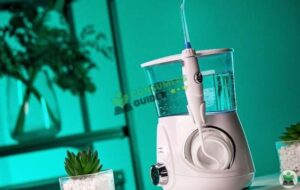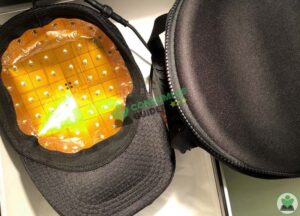Are you getting itchy when swimming in your pool? or your pool equipment is getting damaged without any reason?
Also, if you are noticing the cloudiness in your pool water and algae growth then probably your pH level is not what it should be.
The high pH of the pool water reduces the chlorine efficiency in the pool and has other negative impacts as well (which we will be discussing in detail).
It doesn’t matter whether you have an in-ground pool or high quality Above ground pool, maintaining the pH and alkalinity level of your pool water is very important to have safe swimming.
And, if you are unsure or don’t know how to lower the alkalinity level then we got your covered. We will guide you in detail how to lower the pH and alkalinity level in your pool but first you must know how the pH levels affect the pool water and why you need to lower it.
So, let’s dive in.
What is the Difference between pH and Alkalinity in a Pool?
pH:
As per the literal meaning of pH, it is the negative logarithm of Hydrogen ion and the value of pH defines the acidic and the basic nature of the product.
On a scale of 0 to 14, less than 7 pH value is acidic and higher than 7 value is basic (alkaline) and 7 being the neutral.
In order to swim without having any kind of trouble, the pH of the water should be controlled.
The recommended pH value for swimming pools is around 7.5 to 7.8. The pH level of the pool shouldn’t exceed 7.8 value and shouldn’t be less than 6.9.

However, a lot of people confuse themselves with the both terms; pH and alkalinity. Both of these terms are not the same but are connected to each other.
pH is the concentration of hydrogen ions (acid ions) whereas the alkalinity is due to the carbonates and bicarbonates concentration in the water (you can imagine dissolved limestone is water).
How High pH levels affect the Pool
- If the pH is above 8, then the chlorine added in the pool water will not be effective anymore (the effectiveness reduces to 50%).
- The chances of algae growth increases up to 90%.
- Dull pool color with cloudiness.
Although the signs are similar as they pH is dependent upon the alkalinity level and it would be best to control the alkalinity level first.
TA (Total Alkalinity):
Total alkalinity is the measurement of all the alkaline substances present in the water.
The alkalinity level of the pool controls/maintains the pH and alkalis are also referred to as “buffers”. For that, the alkalinity level should be balanced in order to maintain the pH of the pool.
The higher and lower levels of alkalinity in the pool causes the pH levels to fluctuate so one needs to maintain them both; not at the same time though.
Maintaining the alkalinity level first can automatically control the pH of the water. That’s why we would recommend you to control the alkalinity level first.
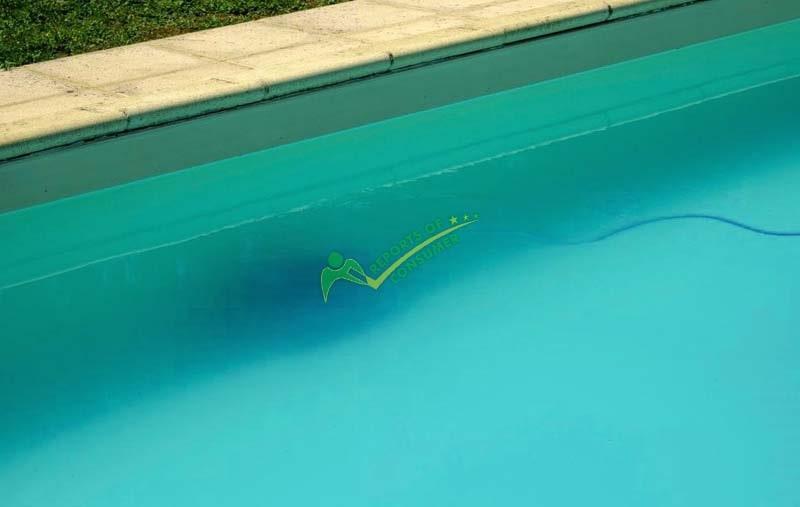
The ideal and recommended alkalinity level for the pool water is 80ppm to 120ppm. Let us elaborate it more with the help of an example.
If the pH of your pool is around 6.7 (slightly acidic) and the alkalinity level is less than 80ppm, then you must use an alkalinity increaser. Similarly, if the alkalinity level is too high, then pH reducer will balance both; pH and alkalinity level.
Now we hope you have the basic idea of how pool chemistry works, let us tell you how the alkalinity and pH levels affect the pool water and ultimately the users.
How High Alkalinity levels affect the Pool water?
A lot of people might not know the negative effects of high levels of alkalinity of your pool, here are the major ones;
- The most common problem of high alkalinity level in the pool is, it reduces the effectiveness of chlorine.
- Frequent production of cloudiness in water.
- The pool wall and surfaces get scaled and stained.
- It increases the pH levels even after addition of pH reducers.
Which factors raise the pH levels in Pool water?
Now we know the effects and impacts of high levels of pH, you must be wondering how the pH level rises? Right? Here are some common factors which increases the pH levels in the pool water;
- The algae growth in the pool can increase the pH levels.
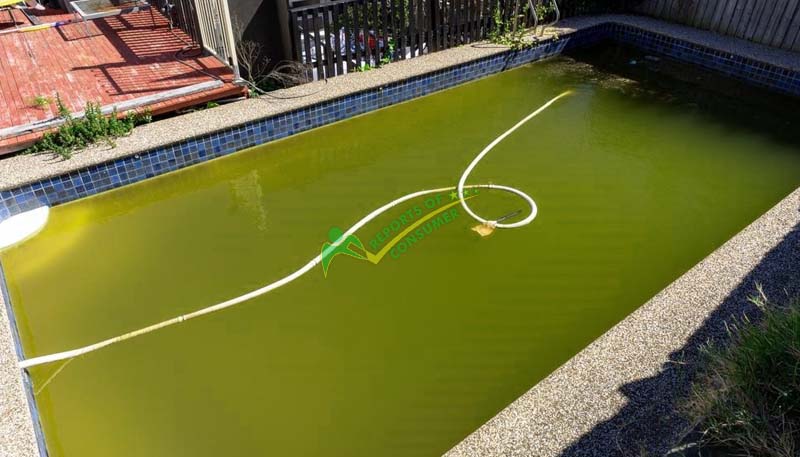
- Using strong chemicals with high amounts.
- Saltwater pools have high pH levels.
- Heating the pool water more frequently.
- Might be due to the tap water content.
- Usage of chlorine naturally increases the pH level with the passage of time.
- Extensive usage of sanitizers and shocks can also increase the pH level.
Also, just in case, if pH of your pool water becomes too low, then you can also check our guide on raising it.
How to Test the pH of the Pool Water?
Before treating the water, you should know how to check the pH and alkalinity levels so you can treat accordingly.
Well, testing the pool water is very easy. There are multiple types of pH kits and strips available in the market.
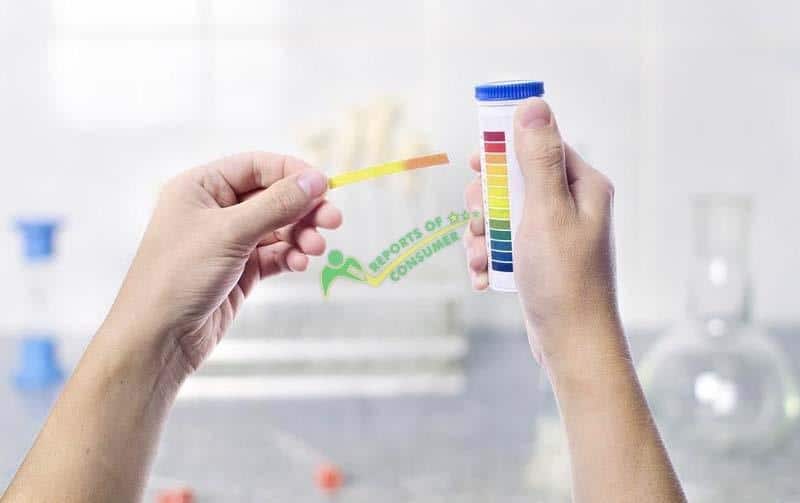
For the strips, dip the strip in the pool water and hold it for a few seconds, it will change the color and compare the color with the coloring sheet (would be present in the kit) and if the pH is higher than 7.8, then it needs to be treated.
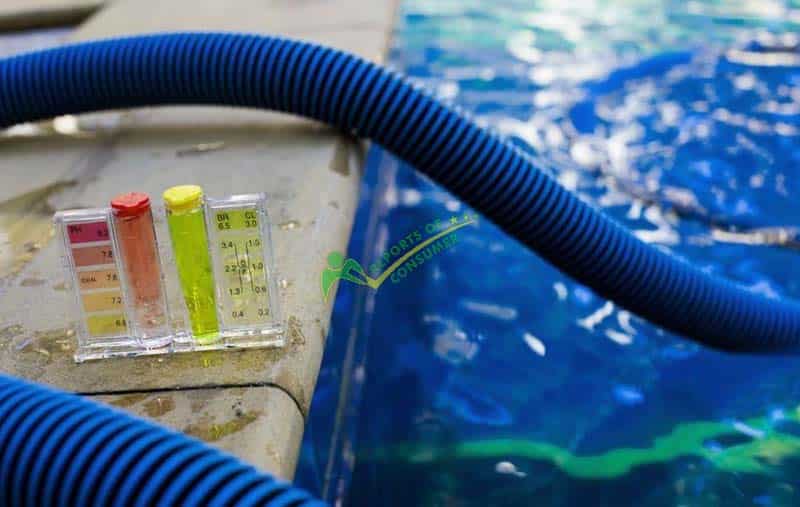
Similarly, there is some digital equipment as well which allows you to dip them in the pool water and they give you reading then and there.
Any good pool testing kit comes with proper instructions and how to use it so read the instructions carefully.
After testing the pool water, if the pH and alkalinity have crossed the permissible limits then this is the time to treat them.
You must also test these before you winterize an above ground pool and cover it.
Methods to lower the pH and Alkalinity in Pool
The simple rule of thumb is, alkalinity of the pool plays a very important role in increasing and decreasing the pH levels. If the alkalinity level is too high (more than 120ppm) then the pH of the pool will automatically rise and vice versa.
So, let’s discuss the most proven methods to lower the pH and alkalinity of your pool in order to have safe swimming experience.
PRO TIP: It would be best to keep an eye on the alkalinity level of your pool in order to maintain the pH (which is the most important concentration in the water which should be maintained).
Dry Acid method (Sodium Bisulfate)
The most common method used nowadays is the dry acid method which is also known as Sodium bisulfate which is the commercial level pH decreaser and is capable of decreasing the alkalinity level as well.
1. Test the Pool water
First of all, test the pool water with the pH test kit and make sure the reading is too high, same goes for the alkalinity test. It would be best to test the pool at least 3 times for validation purposes and set your ideal limit as well.
We would recommend the ideal limit of alkalinity level 100 ppm and for the pH, it would be 7.5.
2. Add the pH Decreaser
Now add the Sodium bisulfate in the pool water. The rule of thumb when adding the pH decreaser or alkalinity decreaser is, for 1000 gallons of water add 1 quart of Sodium bisulfate (to achieve 100 ppm alkalinity level).
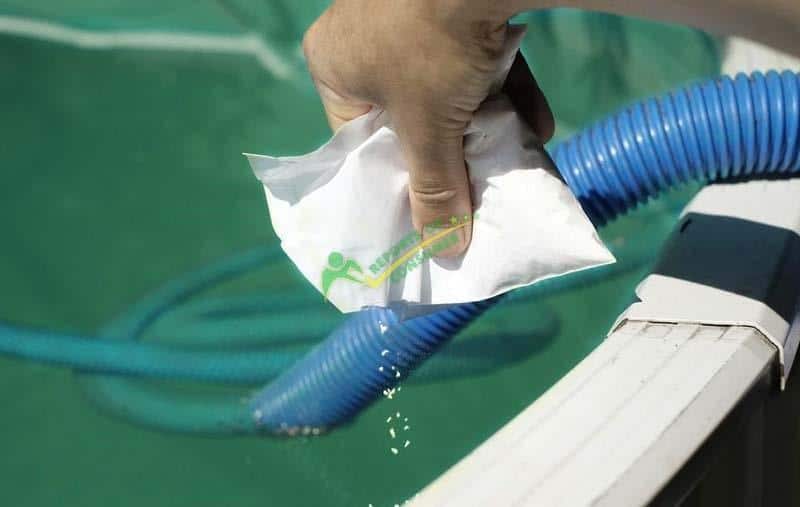
Also, the instruction manual of the pool comes with the detailed method of adding the pH and alkalinity decreasers with the proper amount with respect to the pool size, so go through it as well.
IMPORTANT NOTE: There is no chemical invented still now which can reduce the pH level only or can reduce the alkalinity level only. Both go hand in hand.
3. Let it rest
After adding the powder (Sodium bisulfate), let it rest for at least 24 hours so the decreaser will get dissolved in the water completely without forming any clumps in it.
4. Again check the pH and alkalinity level
After the 24 hours, again check the pH and alkalinity levels and if they have reached the ideal limits (which you have set for your pool), then you are done otherwise repeat the process if the alkalinity and pH level is still high.
NOTE: This method is preferred to use when the alkalinity level is high as compared to the pH.
Muriatic Acid method (Hydrochloric acid)
This method is applicable when the pH of the pool is much higher as compared to the alkalinity level. Also, Muriatic acid is a bit corrosive and harmful chemical which needs to be applied only when wearing the protective gear.
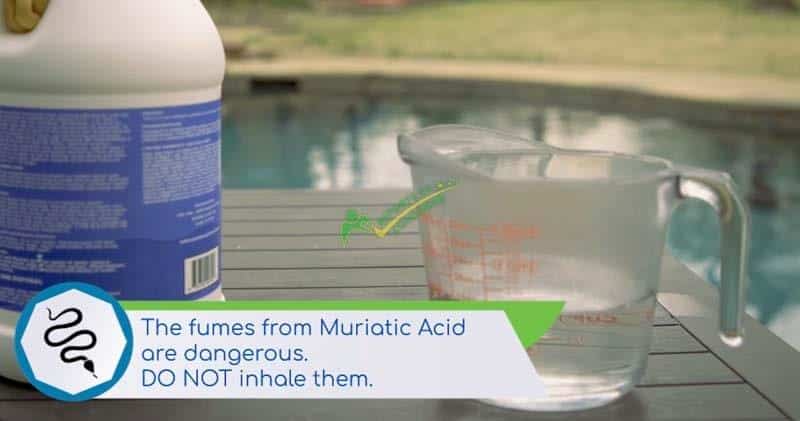
Add the Muriatic acid with the same steps described above and since it’s a corrosive chemical, adding too much amount can have adverse effects.
The ideal amount to add the muriatic acid is 10:1 (gallon of water: muriatic acid).
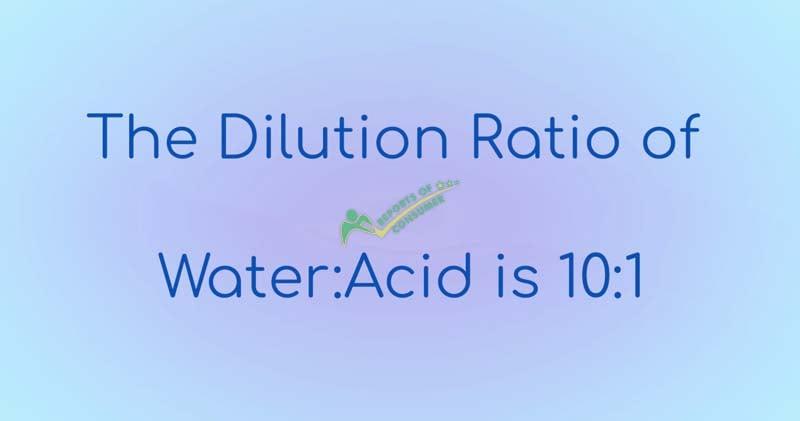
Check the levels after the addition and let it rest for 24 hours and repeat the process if needed.
PRO TIP: Diluting the Muriatic acid before adding it in the water would be the best method and more effective.
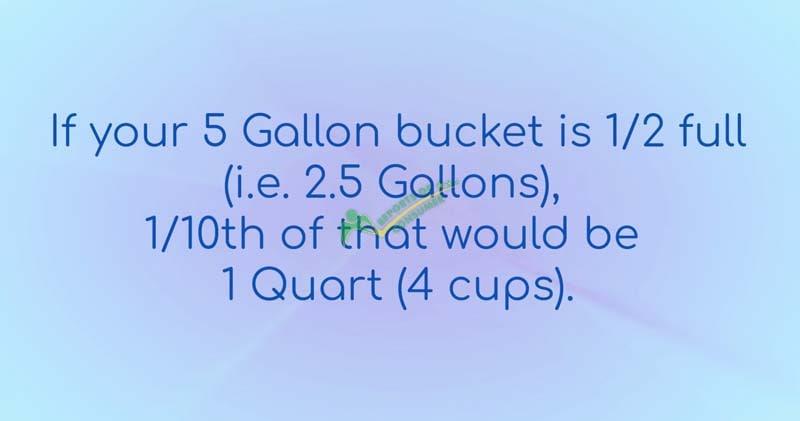
Since this one is a dangerous chemical and one should add it with proper care and protective gear, there are two ways to add the Muriatic acid in the pool.
Method 1
It would be best to turn On the pool pump and add the muriatic acid (by diluting it) in the bottom center of the pool. Turn On the water pump so it can get mixed thoroughly.
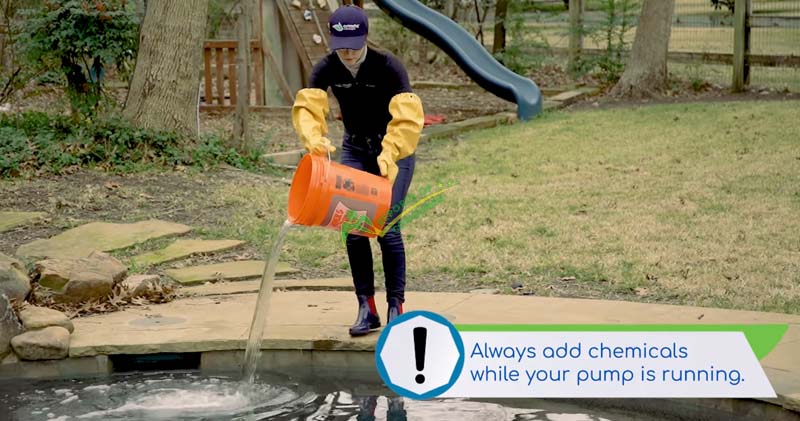
You can watch the procedure below as well.
Method 2
This method is recommended for above ground pool users; add the muriatic acid slowly by walking around the pool and then run the water inlet so it can evenly mix the chemical in the pool.
You may also like: Ways to Fix the Above Ground Pool leaks
What happens if your Alkalinity and pH level is too high?
The high levels of both alkalinity and pH doesn’t only affect the water chemistry of the pool but also causes irritation on skin and eyes.
Also, higher levels of pH can affect the quality of the jump suit or protective gears; it can cause erosion.
Furthermore, if this water is not treated on time and has stayed for a prolonged time period, then it can damage the pool equipment as well.
Recommended Read: Best and Easy way to Install an Above Ground Pool
FAQs
How to lower the pH of the pool naturally?
The only natural way to reduce the pH of the pool is, drain the water of the pool and refill it with the new one. This method prevents you from adding any chemical in it.
However, draining your pool frequently is not recommended as there are chances of de-shaping (above ground pools).
How to lower pH in saltwater pools?
Saltwater pools have high alkalinity levels which resultantly increases the pH levels as well. In order to maintain the both levels, pH reducers work the best (Sodium bisulfate or muriatic acid).
What is the difference between pH increaser and Alkalinity increaser?
pH accelerators have carbonates and pH buffers (alkaline accelerators) have bicarbonates in them. Although both of these affect each other but are not the same.
As the name indicates by itself, pH accelerators are carbonates which increase the pH and total alkalinity of the pool. Whereas, the alkalinity increases the total alkalinity levels precisely.
What lowers the pH in a pool?
pH reducers like Sodium bisulfate and Muriatic acid lowers the pH of the pool and also helps to lower the TA (total alkalinity) levels in the pool water.
Wrapping Up
Both lower and higher levels of pH and alkalinity levels are dangerous for the pool quality. And, if your pool water has high alkalinity and pH levels, then using Sodium bisulfate or muriatic acid are the best proven methods to lower them.
However, it would be best to first check the alkalinity level in your pool before directly using the pH reducer. And, let us tell you, there isn’t any chemical invented yet which can reduce the pH only or alkalinity level; both of these get reduced hand in hand.
So, always keep your Pool clean and checked for its Alkalinity and pH levels.
Still, if you are having any ambiguity regarding this topic, you can ask.

